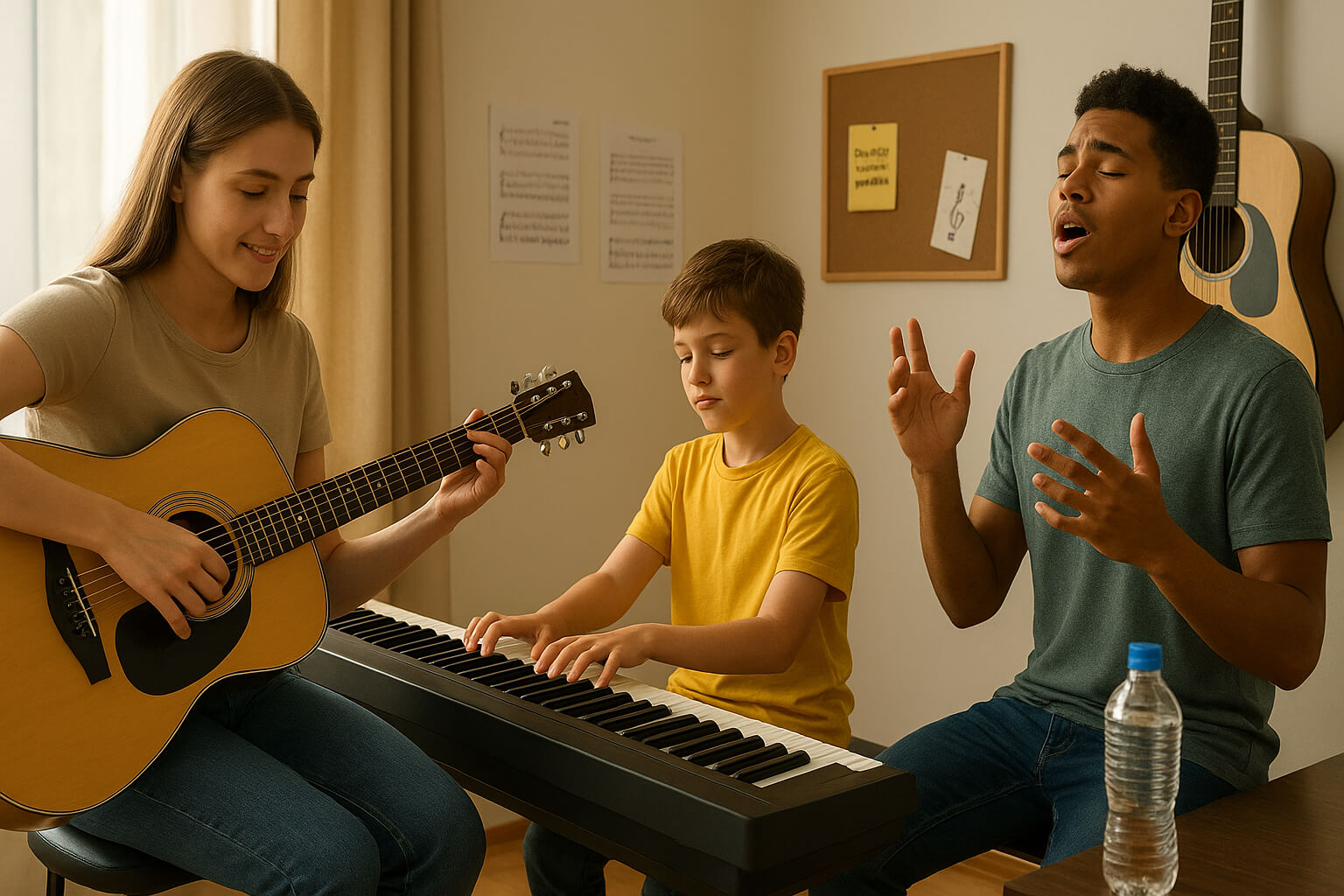August 18, 2025

When you first pick up an instrument, it’s tempting to dive straight into your favorite songs. But just like athletes stretch before competing, musicians need structured warm-up routines to prepare the body and mind. These simple exercises improve performance, reduce tension, and prevent injuries over time—especially for beginners.
Skipping warm-ups is like sprinting without stretching—possible, but risky. Without preparation, tension, fatigue, and bad habits can build up. A consistent warm-up routine:
According to this RocketPages article on the psychological benefits of playing an instrument, warming up can also sharpen your concentration and lower performance anxiety.
Before you even touch your instrument, spend 1–2 minutes checking posture and breathing.
Proper alignment is crucial. Refer to this guide on posture and ergonomics for musicians to help prevent repetitive strain and fatigue.
Examples:
Now you’re ready to ease into your instrument with basic techniques. This isn’t about speed—it’s about accuracy and control.
Every musician needs a strong internal clock. Begin with clapping exercises or tapping out rhythms with a metronome.
Try:
Dive deeper into timing with this must-read: Why Understanding Rhythm Is Crucial.
Tools to try:
Just as warm-ups ease you in, cool-downs ease you out.
Cool-down ideas:
Ending your session with intention reduces tension and helps you retain what you practiced.
Warm-ups aren’t just for professionals—they’re essential for every beginner. A solid 10–15 minutes is all it takes to:
For structure and variety, try the 7-Day Piano Challenge or explore advanced tips in this guide to effective practice.
Want more expert help? Check out:
Stay up to date with the latest tips, expert insights, product reviews, and step-by-step guides to help you grow, create, and succeed—no matter your industry or passion.